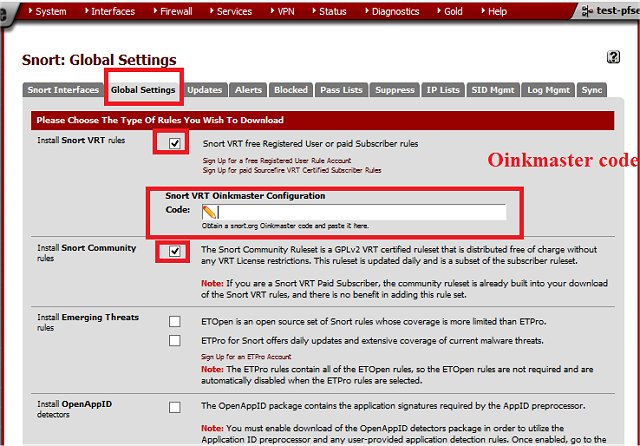Snort has recently released version 3.9.0.0 alongside version 2.9.20, marking a significant update for this open-source network intrusion prevention system (IPS). Snort is designed for real-time traffic analysis and packet logging on IP networks, making it accessible not only to IT professionals but also to casual users looking to enhance their network security.
It's essential to clarify what Snort is—it's not a firewall. While firewalls control and filter traffic based on predetermined rules, acting as a barrier between the network and external threats, Snort goes deeper. As an Intrusion Detection System (IDS) and IPS, it analyzes network traffic in detail to detect threats such as malware and suspicious behavior. While it can drop malicious packets when configured as an IPS, its primary strength lies in threat detection and providing detailed logs for further analysis. Many networks utilize both Snort and firewalls to create a layered security approach.
Snort's versatility is driven by a robust, community-driven rule-based system that continually adapts to emerging threats. It is scalable, catering to both small and larger networks, ensuring that users can rely on it as their networks grow.
To get started with Snort, users typically engage with it through the command line, which may present a challenge for those new to such interfaces. Although there are web-based graphical user interfaces (GUIs) available for Snort, they often involve complex setup processes. After installation, users should explore the documentation found in the installation directory to familiarize themselves with the system. Basic commands can be executed to understand available interfaces and functionalities.
Snort operates in various modes, including Sniffer Mode for real-time traffic capture, Packet Logger Mode for recording packets for later analysis, and Network Intrusion Detection Mode for comprehensive IDS/IPS functionality. The real power of Snort lies in its rules, which guide its detection capabilities. Users can utilize built-in rules, download community rules, or create custom rules tailored to their specific network needs.
In summary, Snort acts as a vigilant watchdog for your network, providing enterprise-level protection without any cost. The tool does present a learning curve, so beginners are encouraged to start in Sniffer Mode to become accustomed to its interface. The Snort community and various online tutorials can be invaluable resources for users at all levels. For optimal installation, users may need to install WinPCAP and update the Microsoft Visual C++ Redistributable Package.
As an extension, it is worth noting that maintaining network security is an ongoing effort. Users should regularly update Snort to benefit from the latest rules and enhancements, participate in community forums for shared knowledge, and consider integrating Snort with other security tools for a more comprehensive defense strategy. Additionally, organizations can look into automating some of Snort's functionalities and alerts, allowing for quicker responses to potential threats
It's essential to clarify what Snort is—it's not a firewall. While firewalls control and filter traffic based on predetermined rules, acting as a barrier between the network and external threats, Snort goes deeper. As an Intrusion Detection System (IDS) and IPS, it analyzes network traffic in detail to detect threats such as malware and suspicious behavior. While it can drop malicious packets when configured as an IPS, its primary strength lies in threat detection and providing detailed logs for further analysis. Many networks utilize both Snort and firewalls to create a layered security approach.
Snort's versatility is driven by a robust, community-driven rule-based system that continually adapts to emerging threats. It is scalable, catering to both small and larger networks, ensuring that users can rely on it as their networks grow.
To get started with Snort, users typically engage with it through the command line, which may present a challenge for those new to such interfaces. Although there are web-based graphical user interfaces (GUIs) available for Snort, they often involve complex setup processes. After installation, users should explore the documentation found in the installation directory to familiarize themselves with the system. Basic commands can be executed to understand available interfaces and functionalities.
Snort operates in various modes, including Sniffer Mode for real-time traffic capture, Packet Logger Mode for recording packets for later analysis, and Network Intrusion Detection Mode for comprehensive IDS/IPS functionality. The real power of Snort lies in its rules, which guide its detection capabilities. Users can utilize built-in rules, download community rules, or create custom rules tailored to their specific network needs.
In summary, Snort acts as a vigilant watchdog for your network, providing enterprise-level protection without any cost. The tool does present a learning curve, so beginners are encouraged to start in Sniffer Mode to become accustomed to its interface. The Snort community and various online tutorials can be invaluable resources for users at all levels. For optimal installation, users may need to install WinPCAP and update the Microsoft Visual C++ Redistributable Package.
As an extension, it is worth noting that maintaining network security is an ongoing effort. Users should regularly update Snort to benefit from the latest rules and enhancements, participate in community forums for shared knowledge, and consider integrating Snort with other security tools for a more comprehensive defense strategy. Additionally, organizations can look into automating some of Snort's functionalities and alerts, allowing for quicker responses to potential threats
Snort 3.9.0.0 / 2.9.20 released
Snort is an Open Source network intrusion prevention system capable of performing real-time traffic analysis and packet logging on IP networks.


